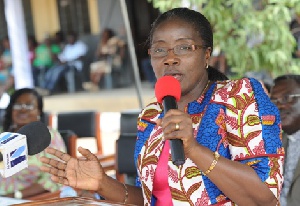The Second Lady Matilda Amissah-Arthur has said there will be a 100 percent increase in the number of diabetic patients in Sub Saharan African by 2035.
This, according to her is due to the change in lifestyle and diet.
She made the comment at the launch of a diabetes screening exercise in selected senior high schools in the Central Region.
She further revealed that the number of children developing the early form of Type 1 diabetes is increasing rapidly.
In developing countries, Type 2 diabetes is also being diagnosed in children, teenagers and young adults.
The National Association of Diabetes estimates that 2 million people are living with diabetes in Ghana.
Matilda Amissah-Arthur said it is well known that a healthy diet, good exercise and leading an active life can reduce Type 2 diabetes. She said it can lead to blindness, amputation, stroke, kidney failure and importance among others.
The President of the National Diabetes Association of Ghana, Elizabeth Esi Denya emphasized the need for Ghanaians to ensure that every student understands what diabetes is and the simple preventive measures they can adopt to avoid getting the disease.
“Students who have parents and relations with diabetes have to be educated because they are at risk and so need to adopt a lifestyle that will not expose them to the disease.”
It’s sad that Poor nutrition and unhealthy environments are increasing the rise in type two diabetes among adolescents in the world, Ms Denyah said.
“Globally, diabetes in childhood has also become a public health issue with an estimated 79,000 children under 15 years developing type one diabetes every year. Many of the diabetic children face barriers to education and endure discrimination in the school environment. In Ghana, an estimated six per cent of the population is diabetic,” Ms Denyah said.
She added that the increase in the diabetes population is due to increase in population growth and ageing, unhealthy eating habits, less physical activity, alcohol and tobacco usage.
She mentioned signs and symptoms of diabetes as frequent urination, especially at night, excessive thirst, loss of weight, dizziness and trembling, blurred vision as well as tiredness and poor concentration.
Ms Denyah said the Association has therefore partnered other institutions to embark on a number of measures including training of health workers on how to care and manage the disease.
Health News of Monday, 15 June 2015
Source: Maxwell Okamafo Addo
Diabetic patients in Africa to increase by 2035 – Second lady
Entertainment












